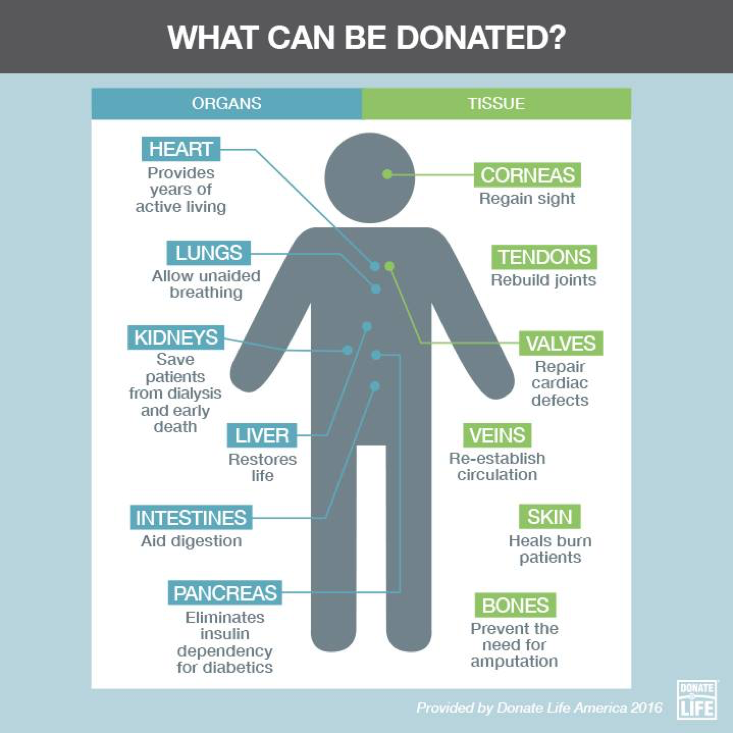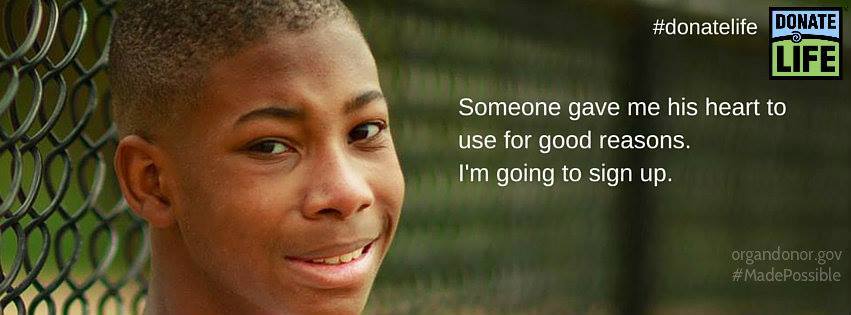ABOUT DONATION
Did you know that each organ, eye and tissue donor has the potential to save up to 8 lives through organ donation and up to 75 lives through tissue donation!
Organ Donation
The heart, lungs, pancreas, kidneys, liver and intestines offer hope to those on the organ transplant waiting list. Donated organs restore health and extend life for those whose own organs are failing.
Tissue Donation
Eye and tissue donation is an incredible gift that heals many people in the United States each year. From heart valves that repair congenital heart defects to ligaments that restore mobility and corneas that give the gift of sight, tissue and eye donation offers hope and healing for many.
Tissue and eye recovery teams perform the recovery and send the donated tissue to one of our partners who prepare the tissue for the lifesaving or life-healing transplantation.





